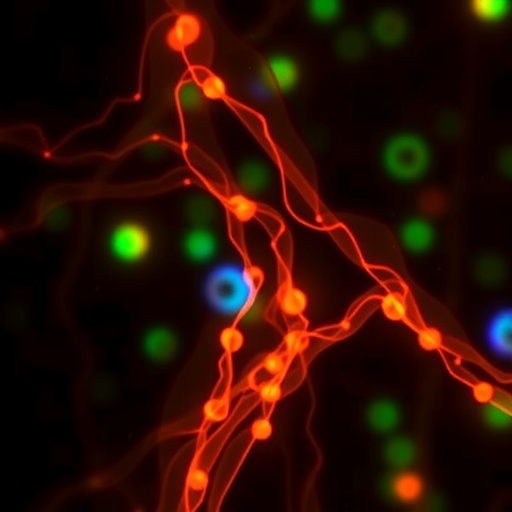In a groundbreaking study published in Scientific Reports, researchers have unveiled intriguing insights into the complexities of plasma proteomics concerning sex and strain differences in two widely used mouse models: C57BL/6 and BALB/c. This pivotal research, led by Suh and Kim, provides a deeper understanding of how biological variances can influence proteomic profiles, which may have implications for the interpretation of preclinical studies and the development of therapeutic strategies.
The notion that sex and genetic background can critically influence biological responses is well established across various scientific domains, yet this study innovatively combines these elements within the paradigm of proteomics. The C57BL/6 and BALB/c mouse strains are distinct not only in their genetic makeup but also in their behavioral and immunological responses, rendering them ideal models for this type of analysis. This research stands out by meticulously examining how these variables interplay and affect plasma protein composition.
At the core of this investigation was the recognition that plasma proteomics can serve as a window into understanding systemic changes associated with health and disease. By employing advanced mass spectrometry techniques, the researchers identified a vast array of proteins in the plasma samples, enabling a thorough characterization of the proteomic landscape of both male and female mice from these two strains. This systematic approach highlights the robustness of utilizing high-resolution technological platforms to unveil subtle yet significant differences.
The results revealed that substantial sex-based variances exist within the plasma proteomic profiles of the two mouse strains. For instance, certain proteins were found to be prominently expressed in females, while others were notably enriched in males. This differential expression underlines the necessity for sex consideration in preclinical research, as overlooking such factors could lead to misleading interpretations of data. The implications for human health could be profound, given that many clinical trials often fail to account for sex-based differences.
Another significant finding from the research pertains to the unique proteomic signatures of the two strains. The researchers cataloged proteins that were either exclusively present in one strain or significantly downregulated in the other. These unique identifiers provide us with critical insights into how genetic variations can influence physiological responses at the proteomic level. Given that BALB/c and C57BL/6 mice have been utilized for years in various studies, understanding these differences enables researchers to refine their experimental designs and interpretations moving forward.
In addition to revealing strain and sex-based proteomic distinctions, this research also highlights the potential for these plasma protein markers to serve as biomarkers for various disease models. The vast array of proteins can shed light on immunological processes, metabolic functions, and stress responses, thereby offering a comprehensive glimpse into the biological mechanisms at play. For instance, certain proteins linked with inflammatory responses were markedly different between the strains, signaling potential avenues for targeted therapeutic interventions.
Importantly, the findings of Suh and Kim also raise underexplored questions regarding the environmental factors that may further influence these proteomic signatures. Factors such as diet, housing conditions, and even microbiota could exert significant effects on the plasma protein profile. Future studies could aim to elucidate these interactions further and expand the understanding of how external variables intertwine with genetic factors to shape biological outcomes.
While the study establishes a foundational understanding of these proteomic variations, it also sets the stage for subsequent investigations that could delve deeper into the functional implications of these differences. For example, future research could explore how these proteomic variations influence the efficacy of drugs or the progression of diseases in these mouse models. Such avenues would not only advance scientific understanding but could also lead to more tailored approaches in therapeutic settings.
The implications of this study are manifold, particularly for those engaged in translational research. By illuminating the importance of considering both genetic and sex differences in mouse models, the research advocates for more inclusive experimental designs that reflect human diversity. This approach could ultimately bridge gaps in existing knowledge and enhance the reliability of preclinical findings.
Overall, the research provides substantial evidence that plasma proteomic profiles in mice are far from uniform. The intricate tapestry woven by genetic background and sex offers rich terrain for researchers aiming to decode biological processes and develop improved therapeutic strategies. As the scientific community continues to recognize the complexity of biological systems, studies like this serve as a critical reminder of the facets that must be considered to foster advancement in our understanding of health and disease.
In conclusion, Suh and Kim’s work has underscored a pivotal aspect of biomedical research: the understanding that biological responses are influenced by a multifactorial framework that includes genetic and sex-dependent factors. Their findings advocate for a paradigm shift in how researchers design experiments and interpret results, fostering an environment where nuance and complexity are embraced rather than overlooked. This approach will not only enhance the translational potential of preclinical studies but may ultimately lead to more effective and personalized health interventions in clinical settings.
By investigating the proteomic signatures across sex and strain, this study has opened new pathways for understanding the underpinnings of biological variability, emphasizing the necessity to incorporate such dimensions in future research for the advancement of science and medicine.
Subject of Research: Differences in plasma proteomic signatures based on sex and strain in mice.
Article Title: Sex- and strain-differential plasma proteomic signatures in C57BL/6 and BALB/c mice.
Article References:
Suh, Y., Kim, Ke. Sex- and strain-differential plasma proteomic signatures in C57BL/6 and BALB/c mice.
Sci Rep 15, 39956 (2025). https://doi.org/10.1038/s41598-025-23706-4
Image Credits: AI Generated
DOI: https://doi.org/10.1038/s41598-025-23706-4
Keywords: Plasma proteomics, C57BL/6 mice, BALB/c mice, sex differences, genetic variation, biomarkers, preclinical research.




